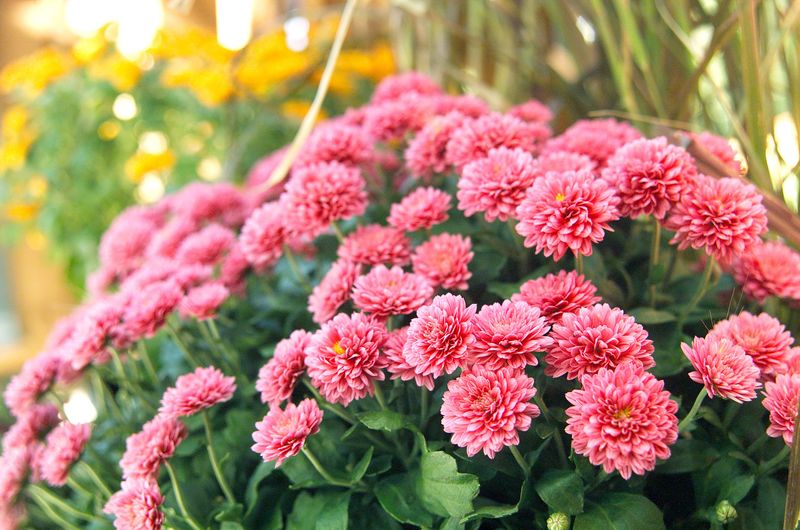Fall in West Virginia can turn a simple porch into a postcard, especially when a pot of mums shows off its color. But those bright blooms fade fast when the weather swings from warm afternoons to crisp nights. Many gardeners watch their mums dry out or sag just when the season hits its stride.
With a little attention, though, these flowers can stay full and vibrant long after the first cool breeze. The right care keeps each bloom standing strong, giving your home that classic fall look from the first leaf drop to the last.
Water Deeply But Don’t Overdo It
Finding the right watering balance is crucial for mum health during West Virginia’s fall season. Your mums need consistent moisture to keep their roots strong and their blooms perky, but soggy soil can lead to root rot and fungal problems.
Check the soil daily by sticking your finger about an inch deep. When it feels dry at that depth, give your plants a good drink. Early morning watering works best because it allows leaves to dry before evening temperatures drop.
Choose The Perfect Sunny Spot
Sunlight fuels your mums’ ability to produce those gorgeous blooms everyone loves. Position your plants where they’ll soak up at least six hours of direct sunlight each day for maximum flower production and vibrant colors.
West Virginia’s rolling hills can create interesting shade patterns throughout the day. Watch how sunlight moves across your yard and pick locations that stay bright during peak hours. Southern or western exposures typically provide the most consistent light as autumn progresses.
Removing Faded Flowers
Removing faded flowers might seem like extra work, but it actually encourages your mums to produce more blooms. When you snip off spent blossoms, the plant redirects its energy toward creating fresh flowers instead of making seeds.
Grab some clean scissors or pruning shears and cut just below the dry flower head. Do this every few days throughout the season. You’ll notice your mums stay bushier and more colorful with this simple maintenance routine that takes just minutes.
Feed Them With Balanced Fertilizer
Nutrition plays a huge role in keeping mums blooming strong through West Virginia’s entire fall season. A balanced fertilizer with equal parts nitrogen, phosphorus, and potassium gives your plants exactly what they need without overdoing any single nutrient.
Apply a light feeding every two weeks using a water-soluble formula diluted to half strength. Stop fertilizing about three weeks before your area’s first expected frost date. Too much food late in the season can actually make plants more vulnerable to cold damage.
Protect From Early Frost Damage
West Virginia’s mountain climate means frost can sneak up earlier than expected, especially in higher elevations. A sudden cold snap doesn’t have to spell disaster for your beautiful mums if you’re prepared with simple protection methods.
Keep lightweight fabric or old bedsheets handy when temperatures threaten to dip below freezing. Cover your plants in the evening and remove the covering once morning temperatures rise above 40 degrees. This creates a cozy microclimate that can save your blooms from frost burn.
Mulch Around The Base Properly
A layer of mulch acts like a blanket for your mums’ roots, helping maintain steady soil temperature and moisture levels. Spread two to three inches of shredded bark, pine needles, or compost around each plant, keeping the material a few inches away from the stems.
Proper mulching prevents water from evaporating too quickly during warm autumn afternoons while also suppressing weeds that compete for nutrients. As temperatures drop later in fall, that mulch layer provides valuable insulation against temperature swings common in West Virginia.
Divide And Refresh Crowded Plants
Mums that have been growing in the same spot for several years often become overcrowded, leading to smaller blooms and weaker plants. Division rejuvenates tired mums by giving each section more room to develop strong roots and abundant flowers.
Spring is actually the ideal time for division in West Virginia, but recognizing crowded plants now helps you plan ahead. Look for centers that appear woody or produce fewer flowers. Mark these plants for springtime division, which will reward you with healthier, more spectacular mums next fall.








